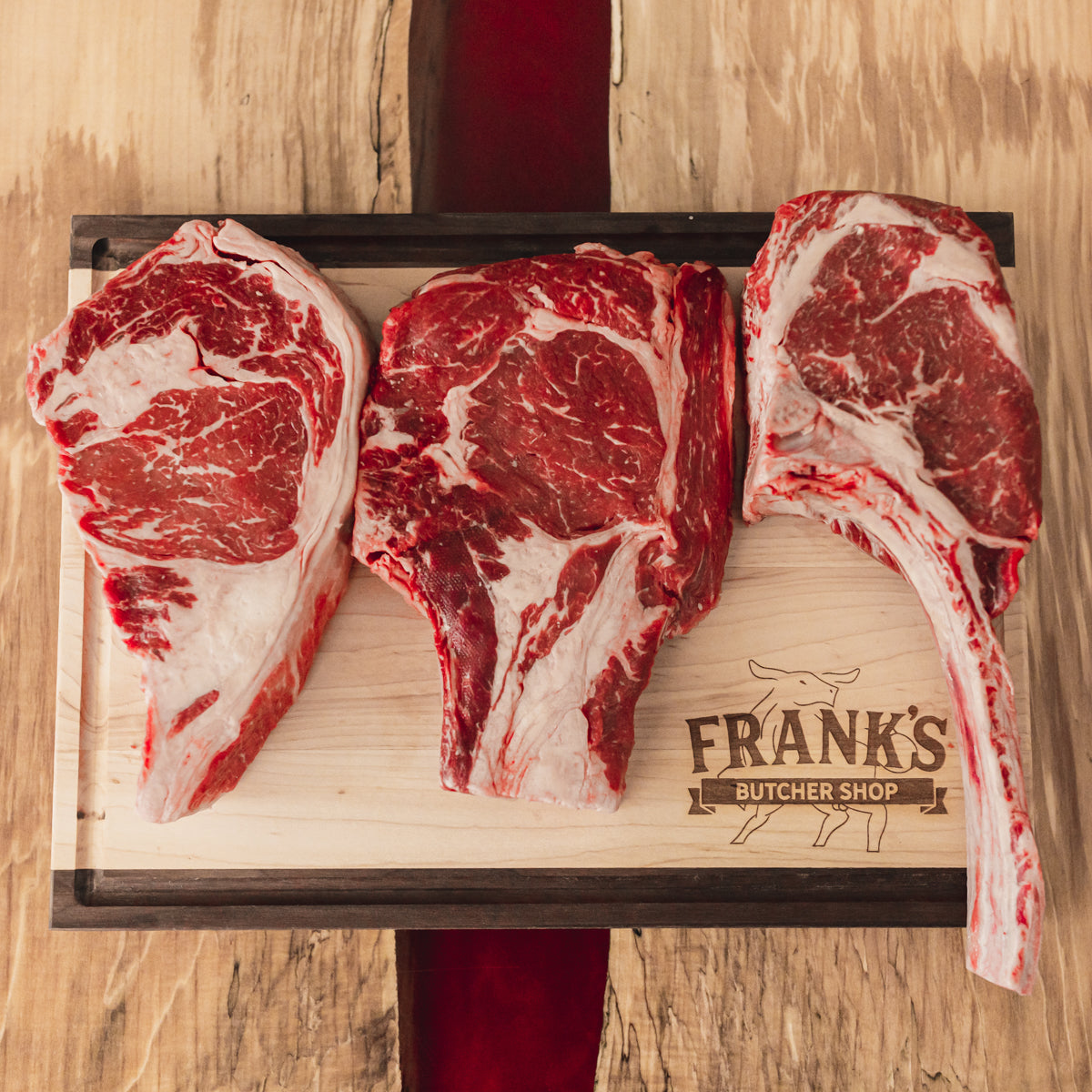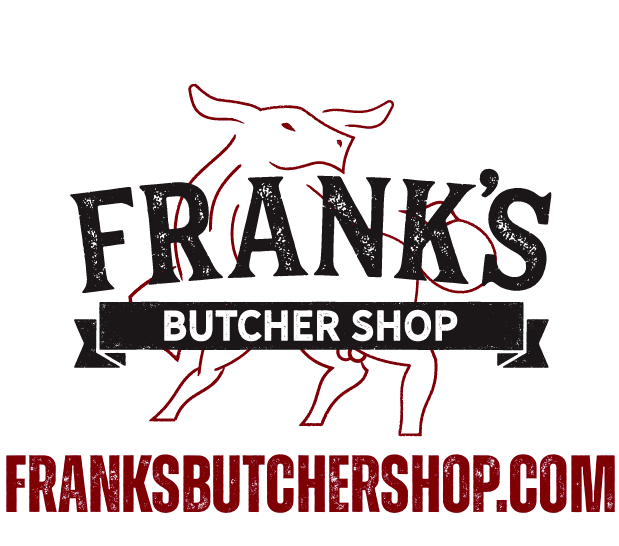Choosing between prime rib and short ribs can be confusing. They might both come from the cow, but they're as different as a grand steakhouse dinner and a comforting home-cooked meal. One melts in your mouth, the other falls off the bone. One’s perfect for special occasions, the other for comfort food cravings.
But which one’s right for you? That depends on what you’re craving and how much time you’ve got. They're both delicious, but completely different experiences. Let’s get through what makes each of these cuts special, how they taste, and how to cook them so you get the best results every time.
What Makes Prime Rib Special?
Prime rib is famous for its rich flavor and tender, juicy texture. This cut comes from the rib section of the cow, and it’s often served as a bone in prime rib roast or a boneless prime rib.
When you cook a prime rib roast, the meat stays moist and flavorful, especially if it’s dry-aged. The marbling (those little streaks of fat) melts during cooking, making each bite extra tender. If you’re looking for a cut that’s easy to cook and always a hit, this is a top choice.
The Story of Short Ribs
Beef short ribs are a totally different cut. They come from the lower part of the rib cage and have more connective tissue. This means they’re tougher if you cook them quickly, but if you slow-cook them, they become incredibly tender and full of rich, beefy flavor.
Short ribs are perfect for braising or slow cooking. They soak up flavors from sauces and spices, and the meat falls right off the bone when it’s done. If you want a meal that’s hearty and comforting, short ribs are a great pick.
Taste and Texture: Side by Side

Let’s talk about what really matters: how these cuts taste and feel in your mouth.
Prime Rib
• Flavor: Rich, beefy, and buttery, with a smooth, melt-in-your-mouth texture.
• Texture: Tender and juicy, especially near the bone if you choose a bone in prime rib roast.
• Best for: Roasting, grilling, or serving as a centerpiece for special occasions.
Short Ribs
• Flavor: Deep, savory, and complex, with a hint of sweetness from slow cooking.
• Texture: Tender and falling-apart when braised, with a hearty, satisfying chew.
• Best for: Braising, slow cooking, or adding to stews and soups.
Cooking Tips for Each Cut
Prime Rib
To get the most out of your prime rib roast, start with a well-seasoned piece of meat. Let it come to room temperature before cooking. Roast it at a low temperature first, then finish with a blast of high heat for a crispy crust. This method keeps the inside juicy and the outside golden brown.
If you’re not sure how to pick the best beef, there are simple signs to look for that tell you you’re getting a great cut.
Short Ribs

For beef short ribs, slow and low is the way to go. Brown the ribs first to build flavor, then simmer them in a tasty liquid like broth, wine, or even beer for a few hours. The meat will become so tender you can cut it with a spoon.
If you’re curious about how different cuts work for burgers, short ribs can be ground up for some of the best burgers you’ll ever taste.
Which One Should You Choose?
It depends on what you’re in the mood for.
• Want something fancy and easy to serve? Go for a boneless prime rib or a 4-bone prime rib. These roasts are perfect for holidays, family gatherings, or anytime you want to impress.
• Craving something hearty and comforting? Pick beef short ribs. They’re great for cozy dinners, especially in the colder months.
If you’re still not sure, remember that both cuts are delicious, just in different ways.
What People Ask the Most
Here are answers to some of the most common questions about these two cuts:
Q. Can I cook short ribs like prime rib?
A. Short ribs need slow cooking to become tender, so roasting them like a prime rib roast won’t give you the same results. Stick to braising for short ribs.
Q. Which is better for a special occasion?
A. A bone in prime rib roast or a 3 bone prime rib roast is a traditional and elegant choice. Short ribs are more casual but just as delicious.
Q. How do I know if my beef is good quality?
A. Look for bright red color, good marbling, and a fresh smell. If you’re unsure, your butcher can help you pick the best cut.
What’s the difference between bone-in and boneless?
Bone-in roasts, like a bone in prime rib roast, tend to be juicier and more flavorful. Boneless roasts, like a boneless prime rib, are easier to carve.
Q. Why does some meat look darker?
A. Sometimes beef can look darker because of how it’s aged or stored. This is usually a sign of quality, not a problem.
Q. Does the way I grill beef change the flavor?
A. Yes! Charcoal and gas grills give beef different flavors. If you’re curious about how grilling methods affect taste, there’s a lot to explore.
Experience the Difference: Hand-Selected, Dry-Aged Wyoming Beef
At Frank’s Butcher Shop, every cut of beef is hand-selected, Wyoming born, raised, and processed. All beef is dry-aged for at least 14 days, so the flavor is deep and rich. The friendly staff can help you find the perfect cut for any occasion, and you’ll always get exceptional quality at a realistic price.
You can find meat anywhere, but nowhere can you find meat like ours. Frank’s Wyoming beef is a one-of-a-kind experience.
Making Your Next Meal Memorable
At the end of the day, whether you choose prime rib or short ribs comes down to what kind of meal experience you want to create. Prime rib delivers that luxurious, buttery tenderness perfect for celebrations and special dinners. Short ribs offer deep, soul-warming flavor that turns simple ingredients into something extraordinary.
Now that you know exactly how they differ in taste, texture, and cooking methods, you can confidently pick the right one for:
• Date nights (go for prime rib)
• Sunday family dinners (short ribs shine here)
• When you want to impress (prime rib never fails)
• Comfort food cravings (short ribs are your friend)
The best part? You don’t need to be a professional chef to cook either one perfectly. With the right cut and simple techniques, you’ll get amazing results every time.
Why Trust Frank’s Butcher Shop?
At Frank’s Butcher Shop, every cut of beef is hand-selected, Wyoming born, raised, and processed. All beef is dry-aged for at least 14 days, so the flavor is deep and rich. The friendly staff can help you find the perfect cut for any occasion, and you’ll always get exceptional quality at a realistic price.
Great meals begin with understanding your ingredients. Now that you’ve mastered these two fantastic cuts, which one will you try first?


